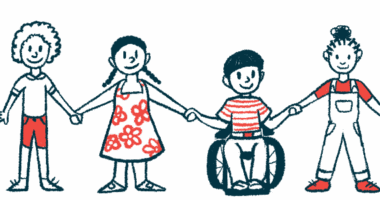Spinraza benefits most type 1 SMA kids on ventilation in Korean study

Treatment with Spinraza (nusinersen) led to modest improvements in motor function for most children with type 1 spinal muscular atrophy (SMA) who were on permanent ventilation in a Korean study.
The results are particularly noteworthy because Spinraza is approved in South Korea only for those patients who are not on permanent ventilation.
“This study showed that [Spinraza] is therapeutically effective, and it can be safely administered without major complications in patients with SMA type I and chronic respiratory failure,” the scientists wrote.
The team added: “If more data is accumulated to prove the therapeutic efficacy of [Spinraza] in high-risk patients, such as those with chronic respiratory failure, more patients will have the opportunity to be treated.”
The study, “Nusinersen for Spinal Muscular Atrophy Type I with Chronic Respiratory Failure: A Retrospective Study in South Korea,” was published in the Yonsei Medical Journal. Spinraza is sold by Biogen, which was not involved in this study.

Patients With Less Muscle Loss More Likely to Respond to Spinraza: Study
Spinraza approved in South Korea only for SMA patients not on ventilation
Spinraza was the first treatment for SMA to become widely approved. It works to boost production of the SMN protein whose deficit causes SMA.
However, “a therapeutic window within 6 months after birth is the most critical factor” in Spinraza use, the researchers noted.
In South Korea, three SMA therapies, including Spinraza, are approved for use — but Spinraza can only be prescribed for patients not on permanent ventilation.
“These drugs pose a significant economic burden,” the team wrote, referencing their high treatment costs.
In this study, a team of scientists from Yonsei University College of Medicine, in Seoul, reviewed clinical data for seven children with type 1 SMA given the therapy.
SMA type 1 is marked by symptoms that manifest during infancy — these children began showing signs of low muscle tone at an average age of less than 4 months.
“To the best of our knowledge, this is the first observational study of patients with SMA type I in South Korea only,” the researchers noted.
The seven children all received treatment with Spinraza, given at an average age of 7.3 years. By the time treatment was administered, all of the patients were on permanent ventilation to help them breathe, and most had very little motor function.
Indeed, their average score on the CHOP-INTEND — a measure of motor function that ranges from 0 to 64 with higher numbers reflecting better function — was 2.3 points at the time of Spinraza treatment.
The patients were followed for an average of nearly four years following the administration of Spinraza. Over this time, four of the seven patients experienced improvements in motor function, as measured by the CHOP-INTEND.
[These findings show] that [Spinraza] can be effectively and safely administered to SMA type I patients even with low baseline motor and [lung] function.
The most dramatic improvements were seen in a child who received Spinraza at the age of 6 months: This child’s CHOP-INTEND score increased from 1 at the time of treatment to 13 at the latest follow-up a year and a half later.
The other three children who had improvements didn’t receive treatment until they were more than six years old, and improvements among these patients were more modest, with CHOP-INTEND scores increasing just a few points over the course of follow-up.
Apart from the four children whose motor function improved, there also was one child whose CHOP-INTEND score started at 2 and remained unchanged out to the latest follow-up more than three years after treatment.
For the remaining two children, CHOP-INTEND scores were a few points lower at the most recent follow-up compared with scores at the time Spinraza was given.
None of the seven patients showed any notable improvement in breathing function. For all seven patients, however, the severity of scoliosis either was completely unchanged or worsened only a little bit over years of follow-up, the researchers noted. Scoliosis refers to an abnormal sideways bending of the spine, which is a common complication of SMA due to weakness of muscles in the abdomen that normally support the spine.
Spinraza was generally well-tolerated in this study; there were no serious side effects or complications related to the treatment. Two of the children died from infections over the course of follow-up, but these infections were not related to Spinraza treatment.
The researchers also noted that one of the children included in the study has since stopped taking Spinraza due to the high cost of the drug.
Overall, these findings show “that [Spinraza] can be effectively and safely administered to SMA type I patients even with low baseline motor and [lung] function,” the researchers concluded, noting that the study “provides valuable real-world data on severe SMA type 1.”
The post Spinraza benefits most type 1 SMA kids on ventilation in Korean study appeared first on SMA News Today.



